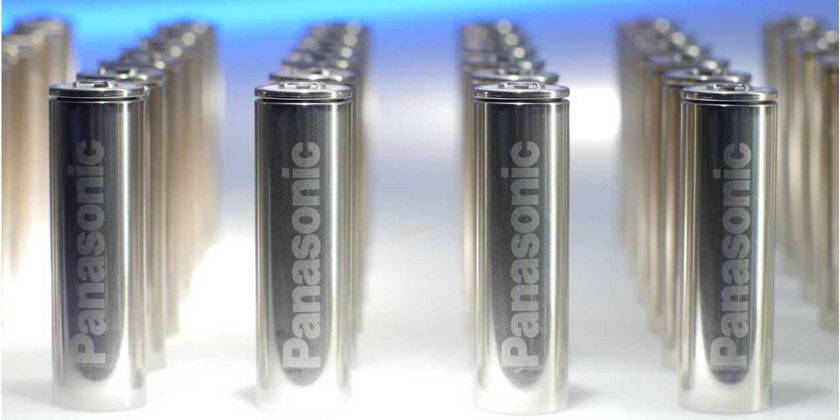Panasonic, one of the world’s largest lithium-ion battery manufacturer for electric vehicles, intends to noticeably improve the energy density of new cells by 2030.
Shoichiro Watanabe, Panasonic Energy CTO, revealed to Reuters that the company is working on a solution to boost the energy density by about 20%. The article does not specify whether 20% concerns volumetric or gravimetric energy density (or both), but gives an example of a potential increase from 750 Wh/l to 900 Wh/l, which suggest volumetric improvement.
It the case of electric cars, it could be equivalent to an additional 100 km (62 miles) of range or alternatively, the same range achieved with the use of a smaller/lighter battery.
According to the article, the Japanese company would like to increase the cell voltage. It usually is around 3.7 V nominal (depending on chemistry) and peaks at 4.2 V (max). Over the years, we heard about concepts of cells that runs at up to around 5 V. Higher voltage allows to greatly increase the amount of stored energy (capacity times voltage), but due to longevity issues, they were not applied to mass market so far.
Panasonic’s plan is to use a new mix of additives to the electrolyte, which would allow to increase the voltage and withstand a higher voltage.
Shoichiro Watanabe noted that “the race among battery makers has been to come up with more potent and effective additives,”.
“Panasonic has developed a way to slow a battery’s degradation at a higher voltage that includes the use of new, more potent additives to the battery’s electrolyte, said Watanabe who is also Panasonic Energy’s executive vice president.”
“Higher voltages allow for increased ability to store energy but even small increases have also tended to drive outsized declines in battery performance.”
The move to 4.3 or 4.4 V was already described as possible, while 4.5-4.6 V is targeted.
“If we can get that to 4.5 or 4.6 volts, I think the whole world view in terms of what’s possible for EVs would change,”
It’s unknown when the voltage of lithium-ion battery cells will start to increase, but it’s expected to take several years.
At this point, it’s also not clear whether the updated chemistry will be applied to the latest 4680-type cylindrical battery cells for Tesla, but we don’t see any barriers for application in any form factor. Panasonic’s 4680 production is in a pilot phase, but in he near future will enter series production stage in Japan and probably also in Kansas (in an all-new factory).
Other areas of interest for Panasonic are: “single-crystal materials” for the battery’s positive electrode (cathode) to solve “microcracking,” related to charging/discharging, and silicon-based anodes.
Source: Reuters
- Share on Facebook
- Share on Twitter
- Share on LinkedIn
- Share on Flipboard
- Share on Reddit
- Share on WhatsApp
- Send to email
Source: Read Full Article

